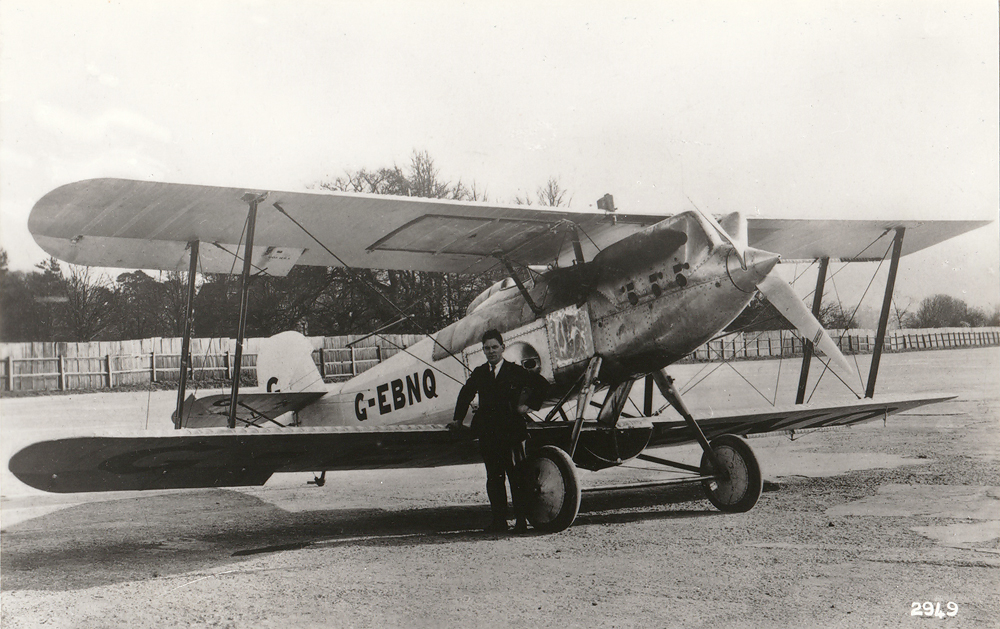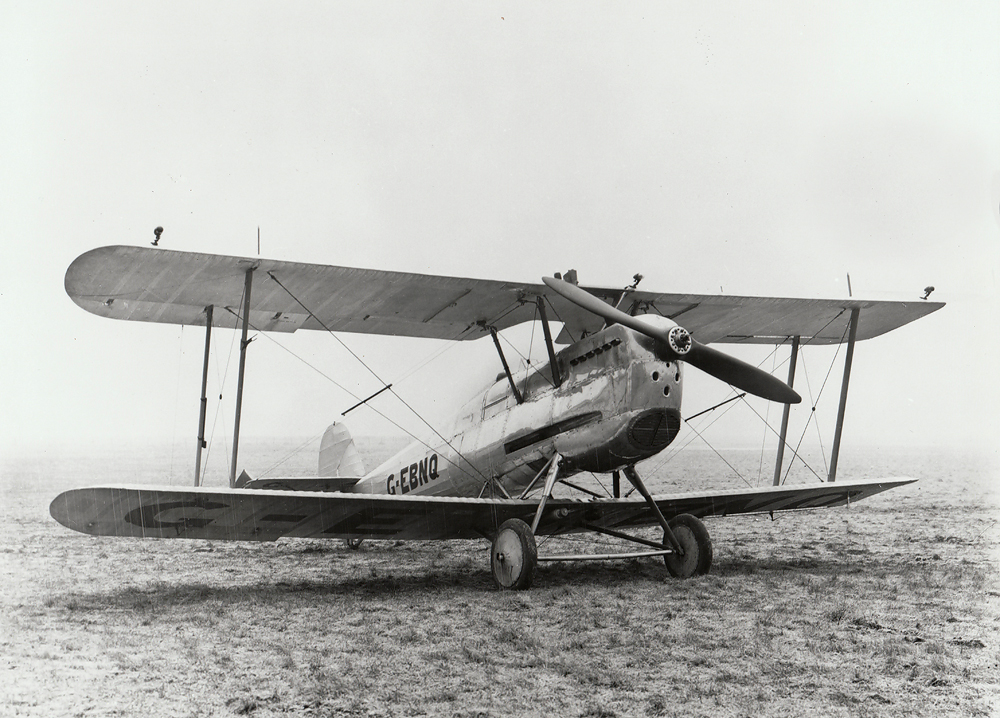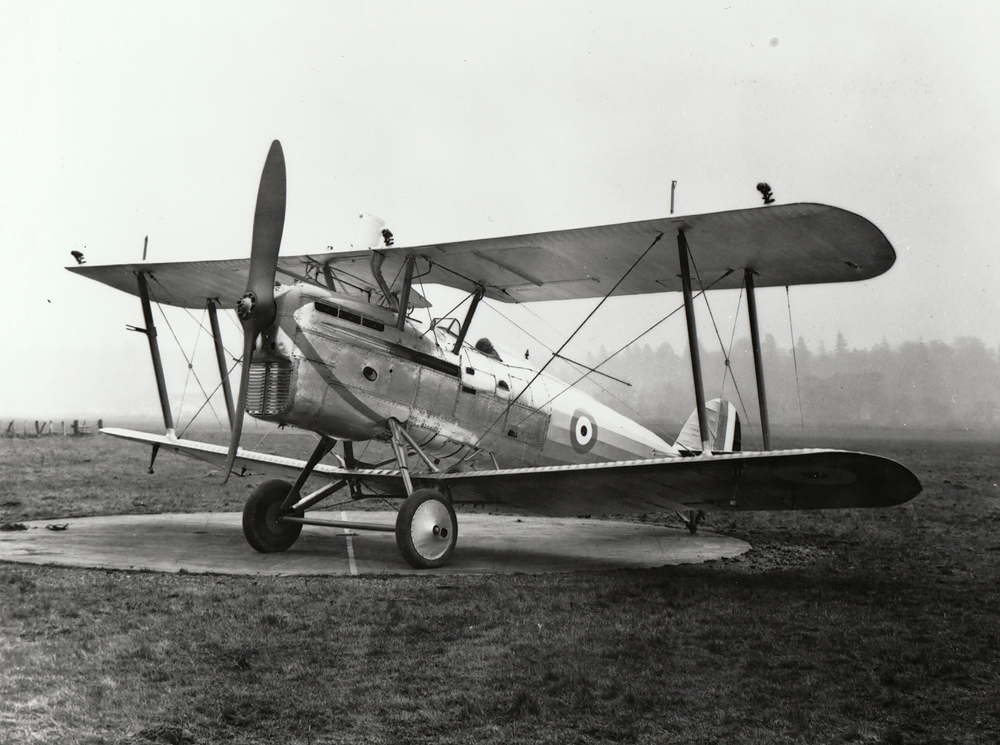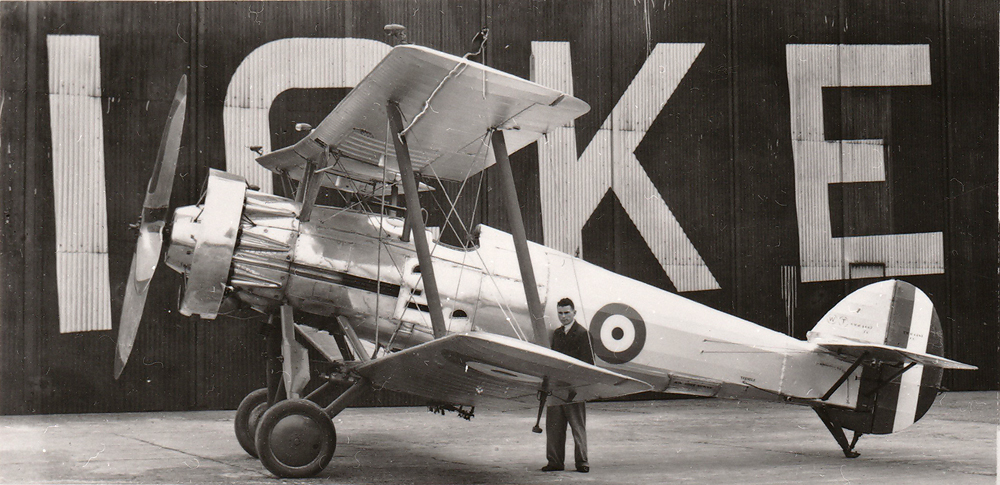The series of biplane fighters offered to the Royal Navy in the late 1920s are a good example of the industry’s efforts to replace the increasingly obsolescent Fairey Flycatcher (see Part 4). There were probably more aircraft considered by the Air Ministry in response to Specification 21/26 than any other naval aircraft requirement in history, and yet the numerous offerings failed to provide a satisfactory successor to the Fairey biplane until the middle of the 1930s.
The Vickers biplanes suggest that the perhaps half-hearted attitude of manufacturers to meeting the Navy’s needs may have been at least partly to blame.
The Flycatcher entered service in 1924 and the Admiralty and Air Ministry fully expected it would be long gone before the end of the 1920s. Specification 21/26 was raised in late 1926 for a fighter of all-metal construction, a greatly improved performance over the Flycatcher (surely not difficult by this time) and should incorporate advances that had been made in deck-landing technology in the intervening period (such as hydraulic wheel brakes).
Nominally, twelve designs were offered to meet this specification (including the Flycatcher II described in part 4 of the series). In reality, several more designs were developed for consideration for the Flycatcher replacement but not formally under 21/26, while several of the aircraft considered as single designs underwent drastic changes.
Part of the reason for this sudden interest in naval aviation from the British aircraft industry was that the issuing of 21/26 came close to two specifications for an interceptor for the RAF – 9/26 and F.20/27. This meant that several of the manufacturers who had developed designs for the RAF decided to try their luck with the naval specification too.

Vickers Type 123
This was how Vickers, a manufacturer that had shown relatively little interest in naval aircraft until this point (the low-powered, all-metal monoplane Vireo aside), came to offer the Type 141. Vickers had been working on fighter designs based on the French Wibault company’s concepts, featuring all-metal structures clad in corrugated aluminium skin, but this proved to be unsuitable for some purposes, so a parallel, more conventional concept was developed. The Type 123 was a relatively large fighter for the period, but of relatively clean form, developed in the knowledge that Rolls Royce was developing a liquid-cooled engine that would eclipse existing designs and would be suitable for installation in a fighter. (The Air Ministry had developed the opinion that the Napier Lion W12 engine was not suitable for fighters, although quite why is unclear, as it was made to work very well in racing aircraft). The Type 123 was flown, however, with a Hispano-Suiza 12Jb, the favoured British Rolls Royce F.XI, later known as the Kestrel, not yet being available, in a closely faired cowling with the radiator in a semi-circular fairing on the underside of the lower wing centre-section. The fuselage was placed mid-gap between the wings, in a similar manner to larger contemporary Vickers aircraft such as the Vespa and Vellore, with the upper wing straight and slight dihedral on the lower wing. The structure was all-mental, with steel tube forming the major structural members, with duralumin section and tubing elsewhere, with fabric covering. Armament was the then-standard two Vickers 0.303in machine guns, in troughs on the fuselage sides.
The Type 123 was offered as a private venture to the RAF, which showed little interest. When specification 9/26 was issued, the aircraft was rebuilt, as by now the Rolls Royce F.XI was available. The revised aircraft was redesignated Type 141. It was little changed from the earlier layout, but looked very different, the sharp Hispano installation being replaced by somewhat bulkier packaging. The radiator location changed from the lower wing to a fairing on the underside of the cowling.

Vickers Type 141
In its new form the aircraft revealed an impressive performance, reportedly clocking 174 mph, and with a better range than many of the other contenders. Some sources say that the controls were light and handling was good. However, there were evidently problems with the Type 141, or it was simply not as good as the competition, as it was eliminated in the earlier stages of the shootout. The eventual choice was made between the Hawker Hawfinch and the Bristol Bulldog, which were apparently very evenly matched, but the Bulldog prevailed.
By this point, Specification 21/26 had been issued. Vickers decided to rework the Type 141 again, revising the radiator configuration and cowling, relocating the guns further up the sides to improve access for the pilot, and increasing the dihedral of the lower wing to improve stability at low speed. Naval accessories such as an arrester hook and slinging bridle on the upper centre section were installed, and the undercarriage was strengthened, with wheel brakes fitted.

Vickers Type 141 modified as a naval fighter
The Type 141 underwent deck-landing trials aboard HMS Furious in June 1929. Again, the machine was found to be unsatisfactory and does not appear to have been considered for the Fleet Air Arm again after that. None of the machines initially submitted were to the Fleet Air Arm’s satisfaction, however, so the door was not entirely closed to Vickers.
The company did at least gain some modest sales when Bolivia went shopping for a fighter aircraft in the military buildup over the disputed Chaco region in 1929. Vickers developed the Type 143 from the 141; the export machine was powered by a Bristol Jupiter VI A nine-cylinder radial engine, and had square-cut wingtips instead of the rounded profile used on the Type 123/141, plus the upper wing gained some dihedral, though there was still less than on the lower wing. The tough, all-metal structure and simple air-cooled engine suited the environment, and Bolivia bought six. When that country went to war with Paraguay in 1932, the Type 143s were responsible for two kills, a Fiat CR20bis and a Potez 25.
Vickers still entertained hopes of securing a domestic order, and knowing that specification 21/26 was unresolved, built a seventh Type 143 airframe along with the Bolivian order. This machine was completed with several distinct differences. In addition to the naval accoutrements, the fuselage seems to have been less extensively faired, being slimmer, with flat side-panels replacing the almost circular cross-section of the Type 143. The engine installation was more sophisticated, with a more powerful Bristol Jupiter clad in a Townend ring for drag reduction, with fairings behind the cylinders to further clean up the airflow. In this form, the aircraft was designated the Type 177, and was reportedly capable of a very impressive 190mph. It was also apparently dived to 300mph in May 1930, once again demonstrating the strength of Vickers’ structures.

Vickers Type 177
The following month, the Type 177 was embarked aboard HMS Furious for deck trials. Unfortunately, the hydraulic brakes, which could be used for steering through differential application, proved tricky for at least one pilot, who over-applied them and nosed the aircraft over. The subsequent damage curtailed the deck trials, and seems to have ended the Type 177’s chances of a production contract. By this time, the Hawker ‘Norn’ (a contraction of Naval Hornet) was virtually assured of becoming the Fleet Air Arm’s next main fighter type, and despite the impressive performance of the 177, Vickers did not continue with the development of the line.







